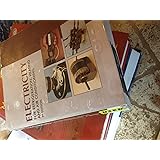Have you ever found yourself wishing for a bit more convenience around the house? Perhaps a light switch just out of reach, a bathtub on the verge of overflowing, or a smartphone battery stubbornly refusing to hold a charge when you need it most. We’ve all been there, facing those small annoyances that make us think, “There *has* to be a better way.” However, the truth is, a better way often lies in our own hands, with a little creativity and some simple tools.
The video above brilliantly showcases “13 Smart Gadgets You Can Make For Your Home,” demonstrating ingenious ways to tackle common household dilemmas using readily available components. These fantastic DIY projects prove that you don’t need to spend a fortune on high-tech solutions when you can craft your own practical and personalized devices. Exploring these homemade smart devices can be an incredibly rewarding experience.
Enhance Your Home Security with DIY Gadgets
Creating your own home security solutions offers a unique blend of practicality and personal satisfaction. These projects are not only effective but also provide valuable insights into basic electronics and engineering principles. While store-bought systems can be costly, these homemade alternatives offer budget-friendly protection and peace of mind for your living space.
The Smart Bathtub Alarm: Preventing Overflows
An overflowing bathtub is a homeowner’s nightmare, leading to water damage and costly repairs. The video demonstrates a clever, low-cost solution: a DIY bathtub overflow alarm. This ingenious gadget helps you avoid unnecessary spills and wasted water, acting as an early warning system. Its simplicity belies its effectiveness, making it a must-try project for any household.
This alarm operates on a straightforward principle, utilizing a float switch that activates a buzzer when the water level rises. The core components include a piezo alarm buzzer, a 9V battery, and a homemade float constructed from bottle caps and a straw. As water fills the tub, the buoyant float lifts, making contact with the battery terminals and triggering the loud beeping alarm. This quick notification allows you to react immediately, preventing extensive damage and saving you from potential headaches before they even begin.
Build a Simple Tripwire Alarm for Doorways
For those seeking an entry-level home security deterrent, the DIY tripwire alarm presented in the video is an excellent choice. This project provides a basic yet effective way to detect unauthorized entry into a room or area. Instead of complex sensors, this system relies on a physical trigger that activates a loud bell, startling intruders and alerting occupants.
The mechanism employs a repurposed clothespin as a switch, which is held shut by a tensioned string acting as the tripwire. When someone steps on or breaks the string, the clothespin springs open, completing a circuit that powers a small motor connected to a bell. This causes the bell to ring rapidly, creating an immediate and undeniable alert. It’s a fantastic example of how everyday objects can be ingeniously transformed into functional security tools, highlighting the power of creative problem-solving and basic electronics for security applications.
Automating Everyday Comfort: Your Own Remote Control Devices
Beyond security, DIY smart gadgets can significantly enhance your daily comfort and convenience. Imagine controlling elements of your environment without having to move, or having beverages dispensed at the touch of a button. These projects illustrate how basic automation can simplify routine tasks and add a touch of modern luxury to your home setup.
Convenient Remote-Controlled Light Switch
There’s nothing quite like the luxury of turning off the lights from the comfort of your bed or couch. The video reveals how to build a simple remote-controlled light switch using a small motor and a remote control circuit board. This practical device eliminates the need to get up, adding a layer of convenience to your relaxation routine, especially on those cold winter nights.
The homemade gadget attaches directly over your existing light switch. A small electric motor, powered by a 9V battery and controlled by a remote, features a bent copper wire acting as a lever. When you press a button on the remote, the motor rotates, causing the lever to flip the standard wall switch up or down. This simple mechanical action transforms a regular switch into a smart switch, demonstrating how easy it is to add a touch of automation to your living space without altering your home’s wiring. Many people find this particular upgrade incredibly useful.
The Handy Mini Drink Dispenser
Entertaining guests or simply enjoying a refreshing beverage becomes much more engaging with a DIY mini drink dispenser. This fun and functional gadget, demonstrated in the video, allows you to pour drinks with ease and precision, making it a great addition to any gathering. It’s an example of how small motors can be used for practical dispensing tasks.
This system uses a small mini pump, a push-button switch, and a 9V battery integrated into a standard bottle cap. After drilling two holes in the bottle cap, one for the intake tube and one for the pump’s output, the pump is securely attached. When the button is pressed, the pump draws liquid from the bottle through a tube and dispenses it directly into a glass. This project showcases the versatility of miniature pumps in creating convenient, personalized beverage solutions, proving that innovative home tech doesn’t have to be complicated.
Sustainable Power on the Go: Ingenious DIY Charging Solutions
In our increasingly connected world, keeping devices charged is a constant challenge. However, instead of relying solely on traditional power sources, the video illustrates several creative methods to generate electricity on a smaller scale. These sustainable DIY charging solutions are not only environmentally friendly but also incredibly resourceful, turning everyday items into personal power plants.
Charge Your Devices with a Hamster-Powered Dynamo
Perhaps one of the most charming and innovative charging solutions presented is the hamster-powered dynamo. While certainly a novel approach, this project demonstrates the fundamental principle of converting mechanical energy into electrical energy, making it an engaging way to introduce concepts of energy harvesting. It effectively shows how even small, consistent movements can generate usable power.
By repurposing a hamster wheel, a small electric motor, and a car USB charger port, you can create a unique charging station. As the hamster runs, the wheel spins, driving the motor which acts as a generator. The generated electricity is then routed through the USB port, allowing you to charge a power bank or directly power small devices. The video shows the multimeter registering increasing voltage as the wheel spins, confirming its efficacy, and subsequently powers a power bank, proving that even adorable pets can contribute to your personal power solutions.
Bicycle-Powered Phone Charger for Outdoor Adventures
For cycling enthusiasts or anyone spending time outdoors, a bicycle-powered phone charger offers a reliable and eco-friendly way to keep devices powered up. This ingenious gadget ensures you stay connected during long rides or emergencies, harnessing kinetic energy that would otherwise be wasted. It represents a truly practical application of kinetic energy generation.
This charger integrates a salvaged RC car motor and wheel, a flashlight LED, and a USB charger port, all mounted to the bicycle’s front fork. As the bicycle wheel turns, it spins the attached RC car wheel, which in turn drives the motor to generate electricity. This power is then directed to the USB port, allowing a smartphone mounted on the handlebars to charge. The video notably displays the phone reaching “58% Charged” during a ride, demonstrating its effective performance and reliability for charging solutions on the move.
Repurpose an Old Fan into a Portable Charging Station
Upcycling old appliances into new, functional gadgets is a core theme of DIY innovation, and repurposing an old stand fan into a portable charging station is a prime example. This project not only breathes new life into discarded electronics but also provides a sustainable way to generate power, especially outdoors where a breeze is plentiful. It champions the idea of turning potential waste into valuable resources.
By removing the original fan motor and replacing it with a smaller electric motor, and then crafting new, lighter plastic blades, the fan housing is transformed. The small motor, acting as a generator, is wired to a car USB charger port installed into the fan’s base. When wind spins the new blades, the motor generates electricity, which can then be used to charge your smartphone or other USB-powered devices. This creative modification allows you to take advantage of natural airflow, showcasing the immense potential of sustainable energy solutions.
Harness Kinetic Energy: The Knee-Powered Charger
Imagine generating power simply by walking or moving your leg; the DIY knee-powered charger makes this a reality. This advanced yet accessible project demonstrates how kinetic energy from human movement can be converted into electrical energy, providing a continuous, personal power source. It’s a fascinating step towards wearable technology and energy independence.
The device uses a servomotor, flexible rulers, and a USB charger port, cleverly strapped around the knee. As the leg bends and extends, the mechanical action drives the servomotor, which functions as a generator. The electricity produced is then channeled through the USB port to charge a connected smartphone. The video explicitly highlights a phone reaching “87% Charged” while the user bends their knee, vividly illustrating the effectiveness of harvesting energy from simple body movements. This truly exemplifies how small, custom smart gadgets can make a big difference.
Unlocking Basic Electronics: Everyday Battery Hacks
Beyond building complex devices, understanding the fundamental principles of electricity and batteries is incredibly useful. The video also delves into several fascinating “battery life hacks” that provide quick demonstrations of electrical properties and practical uses for batteries in unconventional ways. These short, impactful experiments offer accessible insights into basic electronics for your home.
Simple Ignition with a 9V Battery and Pencil Lead
One surprisingly simple trick involves using a 9V battery and a piece of pencil lead (graphite) to ignite a match. This demonstration perfectly illustrates the concept of resistance heating. When the graphite, a conductor with moderate resistance, bridges the battery terminals, the electrical current flowing through it causes it to heat up rapidly, hot enough to light a match. This is a quick and effective way to show how electrical energy can be converted into heat, although caution should always be exercised with electrical experiments.
Emergency Fire Starter with Aluminum Foil and AA Battery
Another impressive display of thermal energy from electrical current involves aluminum foil and an AA battery. By carefully shaping a strip of aluminum foil and pressing it against the battery terminals, a short circuit is created. The foil’s low resistance causes a large current to flow, generating intense heat almost instantly, enough to ignite a cotton ball. This serves as a powerful reminder of how readily available materials can be used for survival hacks, emphasizing the importance of understanding basic electrical properties, but also the need for extreme care due to the rapid heating involved.
Testing Battery Life: The Bounce Test
Ever wondered if a battery is truly dead or still has some juice left? The video demonstrates a simple, yet surprisingly effective, “bounce test” for AA batteries. A full AA battery, when dropped, will typically bounce only once and land solidly. Conversely, an empty or depleted AA battery will bounce multiple times before coming to rest. This phenomenon is attributed to the build-up of gases and changes in the internal chemical composition of the battery as it discharges, which alters its internal structure and damping properties. This visual trick is a quick and handy way to check your battery reserves.
Crafting a Miniature Battery-Powered Soldering Iron/Engraver
For intricate crafting or quick repairs, a miniature battery-powered soldering iron or engraver can be incredibly useful. The video shows how to construct a small tool using a 9V battery and repurposed syringe needles. By wiring the needles to the battery terminals, they act as resistance heating elements, capable of generating enough heat for light soldering or burning designs onto paper. This DIY solution provides a compact and portable alternative for detailed work, illustrating how a simple current can be focused to create a heated tip, making it a valuable addition to your arsenal of smart gadgets.
Basic Magnetic Propulsion with Coiled Wire and Magnets
Delving into the captivating world of electromagnetism, the video presents a simple yet mesmerizing demonstration of magnetic propulsion. By inserting a small battery, fitted with magnets on each end, into a coiled copper wire, you create a rudimentary linear motor. The current flowing through the coil interacts with the magnetic fields, causing the battery-magnet assembly to move through the coil. This “train” illustrates fundamental principles of physics, specifically the Lorentz force and the motor effect, showing how electricity and magnetism can generate motion. This intriguing experiment offers a glimpse into how basic components can lead to dynamic, moving smart gadgets.











